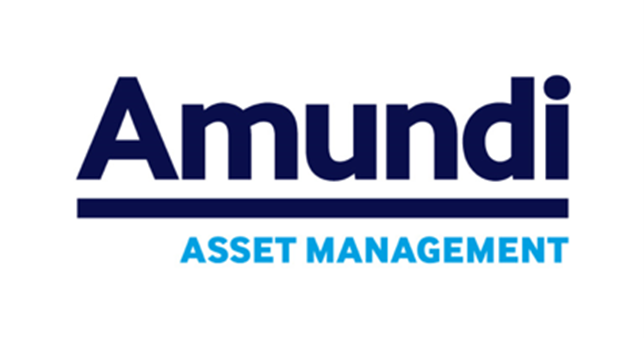My experience as an Investment Specialist at Amundi Asset Management
In this article, Tanguy TONEL (ESSEC Business School, Global BBA, 2019-2023) shares his professional experience as an investment specialist in the ETF, Smart Beta & Indexing division of Amundi Asset Management.
About Amundi Asset Management
Amundi Asset Management is a leading global asset manager with over €1.7 trillion in assets under management as of December 31, 2022. The company was founded in 2010 as a joint venture between Crédit Agricole and Société Générale and has since grown to become one of the largest asset managers in Europe.
Amundi offers a wide range of investment solutions across all major asset classes, including equities, fixed income, multi-asset, and alternative investments. The company serves a diverse client base, including institutional investors, corporations, and individual investors.
Logo of Amundi.

Source: Amundi
My internship
I joined the Investment Specialist team of the ETF, Smart Beta & Indexing division which works as a facilitator for the asset management and the sales teams. The team answers clients on the most technical questions and their due diligence inquiries, applies to calls for tenders, monitors the market and does the reporting of the funds.
My missions
During my internship, I shadowed the team, helping them on a broad variety of their tasks.
Among those, I worked on the reporting of the funds, researching data to answer clients’ questions and on drafting sales offers for calls for bids. Additionally, I documented the tools used by the team in their daily activity which allowed me to get involved in nearly all the team’s duties.
Required skills and knowledge
While some technical skills such as Excel/VBA are welcomed, the most important skill to have is curiosity. Indeed, as financial markets are constantly evolving it is important to look for anything that can help explain any change, whether in fund performance, in the regulatory environment or in clients’ demand to react proactively. The ability to adapt is crucial, tools change.
What I learned
During the internship, I have been able to learn a lot about passive management. Indeed, the funds offered by Amundi are very diverse and allowed me to discover the concept of Smart Beta, how indices are built and replicated by asset managers, how ESG rules are incorporated into funds…
Financial concepts related my internship
Passive asset management
Passive asset management is an investment strategy that seeks to replicate the performance of a market index or benchmark. It involves investing in a diversified portfolio of securities that closely mirrors the composition of a particular index.
Usually replicated by index funds or ETFs, the indices follow different kind of rules in their composition while the asset managers work to replicate them without getting involved in the composition.
Physical and Synthetic ETFs
There are two main ways that an ETF can replicate an index: physically and synthetically.
A physically replicated ETF holds all or a representative sample of the securities in the index it tracks. For example, if an ETF tracks the S&P 500 index, it will hold all 500 stocks in the index or a representative sample of those stocks. The ETF’s performance would then closely track the performance of the index.
A synthetically replicated ETF, on the other hand, does not hold the underlying securities in the index. Instead, it uses derivatives, such as swaps, to replicate the index performance. The ETF enters into an agreement with a counterparty, such as a bank, to receive the returns of the index in exchange for paying the counterparty a fee. The counterparty holds the underlying securities and takes on the risk of holding them.
Physical replication tends to be more straightforward and transparent, as investors can see exactly what securities the ETF holds. However, it can also be more expensive, as the ETF incurs costs associated with buying and selling the underlying securities.
Synthetic replication can be cheaper, as the ETF does not need to buy and sell the underlying securities. However, it also introduces counterparty risk, as the ETF is reliant on the counterparty to fulfill its obligations. Additionally, synthetic ETFs may be less transparent, as investors may not know exactly what securities the counterparty is holding.
Smart Beta
Smart Beta is a strategy used in asset management that seeks to outperform traditional market-cap weighted indices by selecting stocks based on factors other than their market capitalization. These factors can include value, momentum, quality, and low volatility, among others.
Using Smart Beta, investors will seek to lower the variance of their portfolio, reducing risk or try to improve returns.
Indeed, one of the flaws of passive funds such as ETFs is that by following the indices, they might bear unrewarded risk or miss rewarded risk. This is due to the fact that for market-cap weighted funds, when a company’s market cap rises as a share of the index, it will also rise as a share of the fund, even if it yields less returns to the holder than another stock.
This has lately been seen with tech companies that grew exponentially as money flowed into those funds.
Why should I be interested in this post?
As passive management is taking a larger share of the asset management industry, understanding this growing trend can provide a valuable edge whether to work inside it or deal with it. Nonetheless, the concepts detailed in this article can also be useful for personal finance decisions.
Related posts on the SimTrade blog
▶ All posts about Professional experiences
▶ Youssef LOURAOUI ETFs in a changing asset management industry
▶ Youssef LOURAOUI Smart Beta industry main actors
▶ Jayati WALIA My experience as a credit analyst at Amundi Asset Management
▶ Youssef LOURAOUI Passive Investing
▶ Youssef LOURAOUI Active Investing
Useful resources
Amundi ETF, Gestion indicielle et Smart Beta
Amundi ETF
About the author
The article was written in June 2023 by Tanguy TONEL (ESSEC Business School, Global BBA, 2019-2023).

